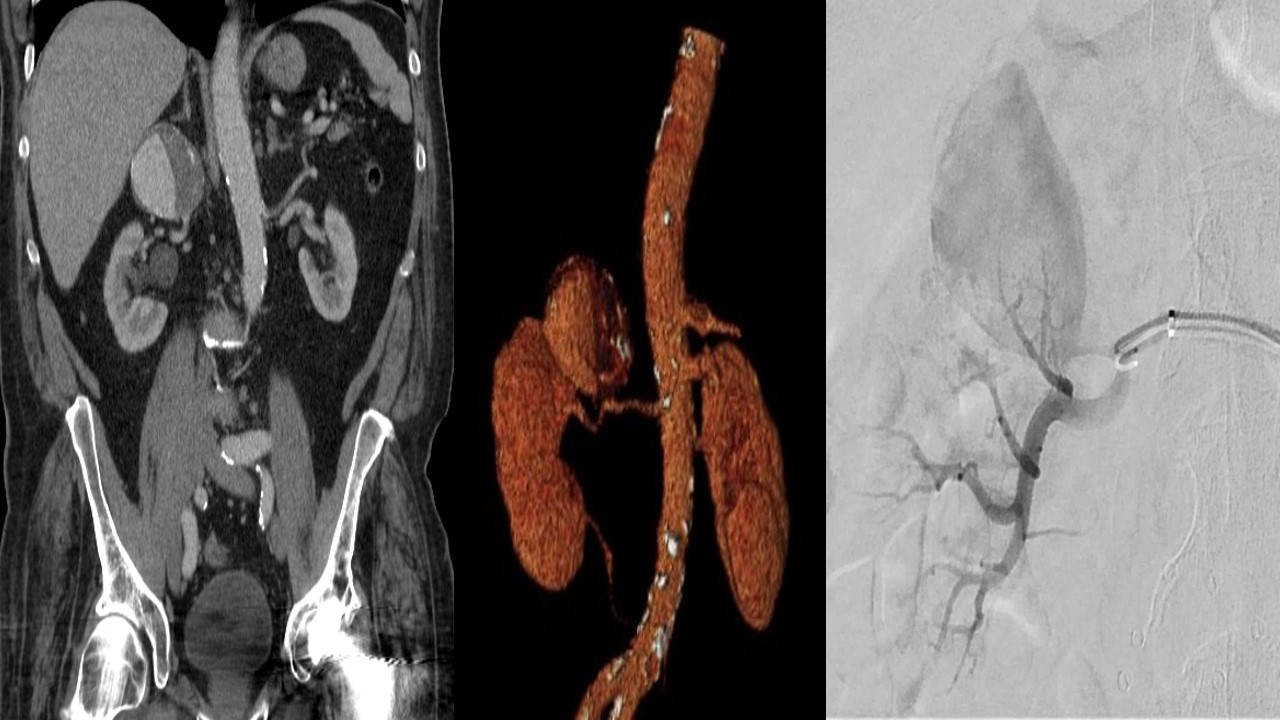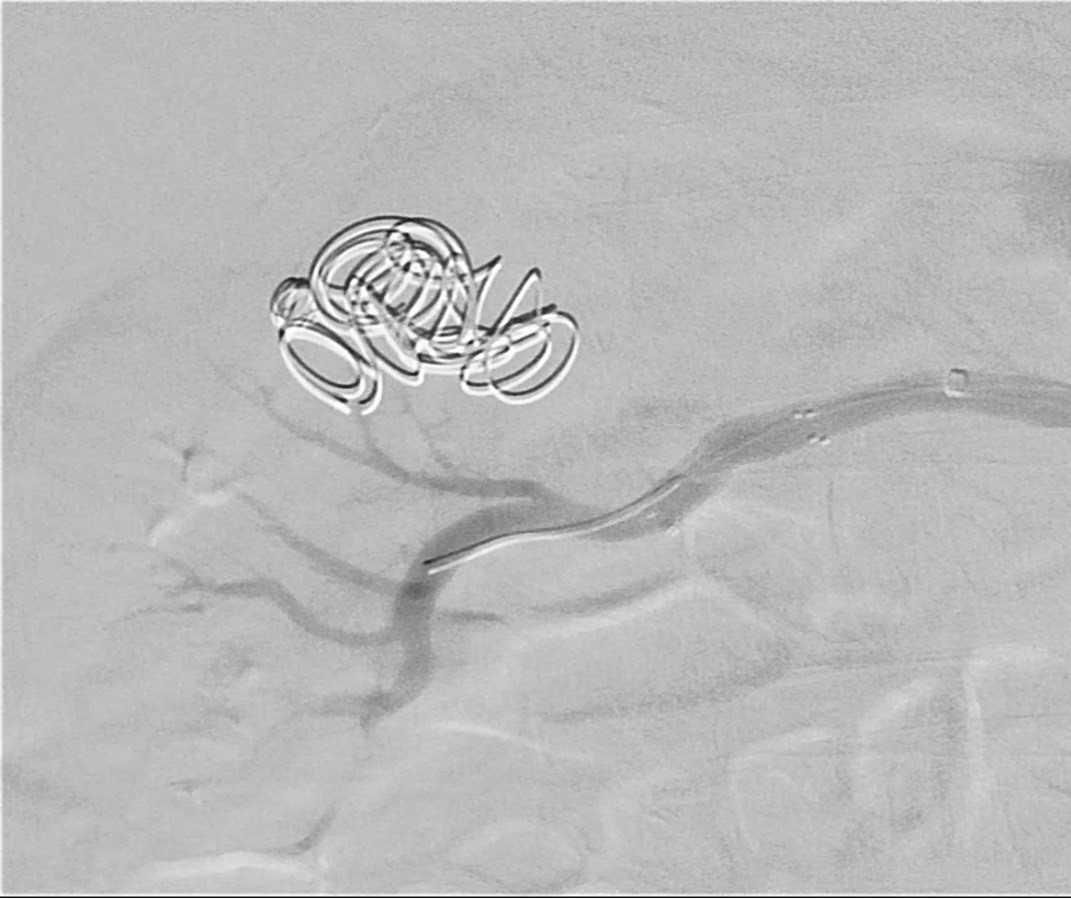Endovascular Treatment of an Idiopathic Renal Pseudoaneurysm
Adam Celio, Junaid Akbani, MD, Bryan Ehlert, Seth Noland, MD.
East Carolina University, Greenville, NC, USA.
OBJECTIVES: Renal artery pseudoaneurysms are being diagnosed at an increasing rate and are typically secondary to trauma, inflammation, previous endovascular intervention, or renal biopsy. We aim to present a case of an incidentally identified asymptomatic 7.2 centimeter idiopathic renal artery pseudoaneurysm and to review the literature in regard to this disease process.
METHODS: A 78-year-old male presented with shortness of breath following an international flight and was diagnosed with recurrent pulmonary embolism, as well as, an incidentally identified right upper quadrant mass. A CT with IV contrast of his abdomen demonstrated that the mass was a partially thrombosed aneurysm that was likely originating from his renal artery. The patient had no history of trauma, previous renal biopsy, previous arterial catheterization, or history of aneurysmal disease. He had no abdominal or flank pain and had no history of hematuria.
RESULTS: He was taken to the operating room for an arteriogram which confirmed that the pseudoaneurysm was originating from the right superior segmental artery. (Image 1) The pseudoaneurysm was coil embolized and a covered stent was placed in the main renal artery to exclude the superior segmental artery. (Image 2) The patient did well post-operatively with preserved renal function. He was seen in clinic two weeks post-operatively and evaluated with a CTA which demonstrated a thrombosed pseudoaneurysm without change in his chronic hypertension.
CONCLUSIONS: The true prevalence of segmental renal artery pseudoaneurysms is unknown but overall diagnosis of renal aneurysms is increasing due to discovery during unrelated abdominal imaging. Potential interventions include aneurysmorrhaphy/aneurysmectomy, nephrectomy, coil embolization, and covered stenting. The trend in most centers is to first proceed with an endovascular approach in stable patients due to a decrease in perioperative morbidity. Our patient represents a rare idiopathic giant 7.2cm renal artery pseudoaneurysm that was managed endovascularly with good short-term result.

Back to 2018 ePosters




